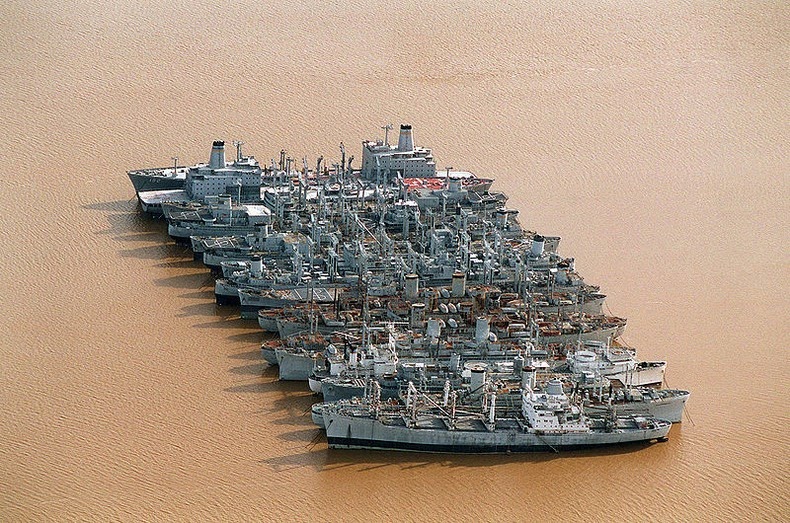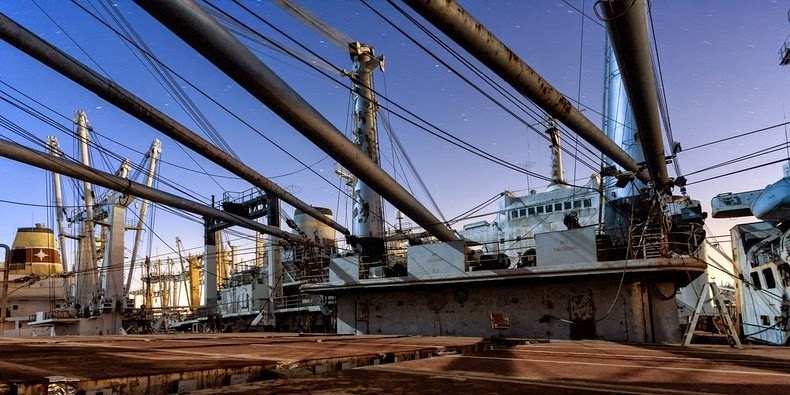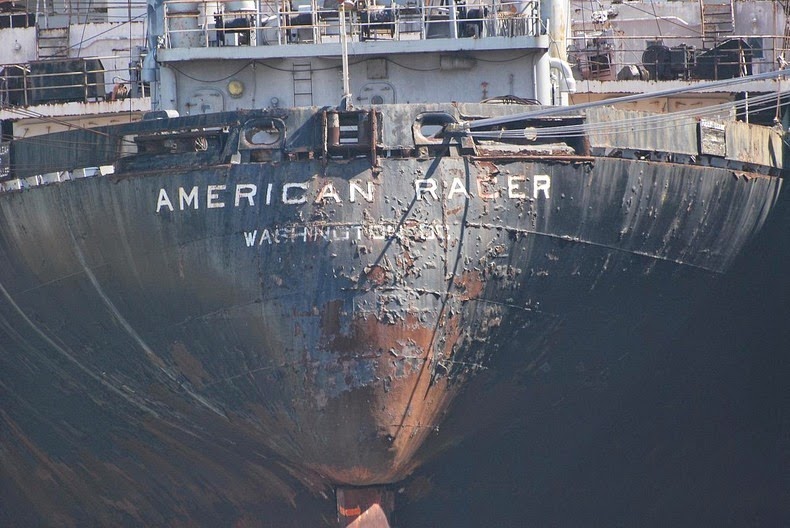After the second World War, the United States established the National Defense Reserve Fleet (NDRF) – a fleet of vessels that serve as a reserve of ships for national defense and national emergency purposes. The fleet consist of mostly merchant vessels, that can be activated within 20 to 120 days to provide shipping during national emergencies, either military or non-military, such as commercial shipping crises. At its height in 1950, the NDRF consisted of 2,277 ships at eight anchorage sites: James River, Virginia; Beaumont, Texas; Suisun Bay, California; Stony Point, New York; Wilmington, North Carolina; Mobile, Alabama; Astoria, Oregon; and Olympia, Washington.
Only the first three, out of the original eight, exist today. Long years of neglect and disuse have turned these ships into near wrecks, with flaking paint polluting the waters with heavy metals and hazardous chemicals. As of April 30, 2014, only 122 vessels are left in the NDRF, and their numbers are reducing still.

Inactive U.S. Navy auxiliary ships of the James River Reserve Fleet Photo credit
Since its establishment, NDRF vessels were used in seven wars and crises situations. During the Korean War, 540 vessels were broken out to move military forces. During a worldwide tonnage shortfall in 1951–53, more than 600 ships were reactivated to carry coal to Northern Europe and grain to India. From 1955 through 1964, another 600 ships were used to store grain for the Department of Agriculture. Another 223 cargo ships and 29 tankers were activated during a tonnage shortfall after the Suez Canal was closed in 1956. During the Berlin crisis of 1961, 18 vessels were activated and remained in service until 1970. Another 172 vessels were activated for the Vietnam War.
In 1976, the NRF was augmented by the Ready Reserve Fleet (RFF) to provide for military emergencies. In August of 1990, 78 ships were deployed to support Operations Desert Storm during the Gulf War. Between August 1990 and April 1991, the ships transported 750,000 short tons of dry cargo, which was one-fifth of the total dry cargo sealifted during the conflict.
In 2005, 5 ships of the RRF and 4 of NDRF were used for relief operations in the aftermath of hurricanes Katrina and Rita. When a devastating earthquake struck Haiti on January 12, 2010, 6 vessels were activated and took part in the relief efforts. Hurricane Sandy also saw use of one RRF vessel, and two NDRF training vessels.
Over the years, the federal Maritime Administration (MARAD) has been disposing of obsolete ships either by sending them to the scrapyard for recycling or sinking them for use as artificial reefs, such as the vessel Kittiwake that was sunk near Cayman Islands.
On of the worst affected is the Suisun Bay Reserve Fleet. At its peak, in 1952, the bay had 340 ships anchored. Today, less than 50 ships remain but it still accounts for the largest number of vessels of the three anchorages that comprise the NDRF.
The ships have been polluting the bay, which is a critical environmental area for fish and wildlife, with toxic materials. The MARAD has pledged reduced the fleet gradually, with 25 ships in the worst condition taken out within two years and the remainder by fall 2017.



Sources: Wikipedia / MARAD.dot.gov / SFgate


















I remember as a young boy in the 60's looking down at the ships mothballed at Suisun Bay, in California. It was full of the old Liberty ships and others ships back then.
ReplyDelete